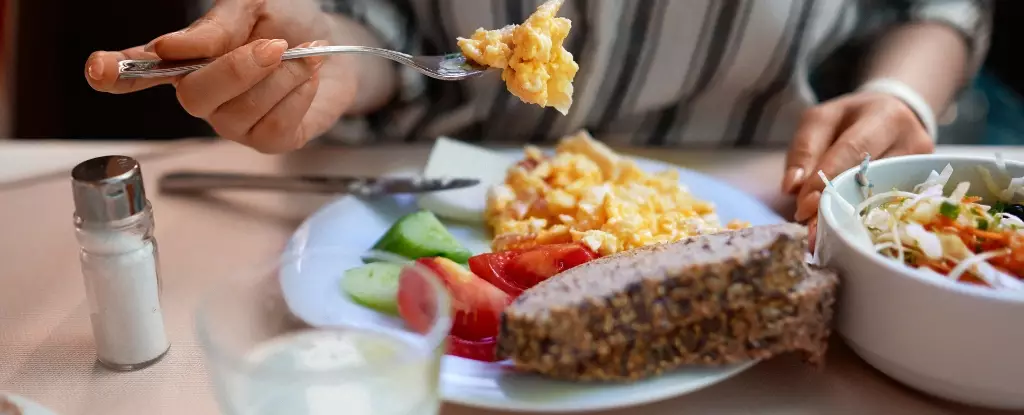In recent years, drugs such as semaglutide—marketed under the names Ozempic and Wegovy—have surged in popularity for their ability to promote weight loss. However, a compelling trend is emerging: many individuals still prefer a natural, medication-free approach to shedding pounds. This preference underscores a significant point in the world of weight management: it’s possible to attain weight loss benefits through nutritional strategies that resonate with our natural biological processes. This article dives deeper into how certain foods and dietary habits not only enhance our health but can also replicate the effects of renowned weight-loss medications.
The Science Behind Semaglutide: What Makes It Work?
Semaglutide, by design, targets the hormone known as GLP-1 (glucagon-like peptide 1), which plays a pivotal role in regulating our appetite and digestion. By increasing GLP-1 levels, these medications enable a prolonged sensation of fullness, helping to curb overeating. Notably, they inhibit an enzyme called DPP-4 that normally deactivates GLP-1, thereby allowing the satiety signal to linger much longer than it naturally would. This hormonal maneuvering explains why such medications can facilitate significant weight loss.
Yet, not everyone is comfortable with pharmacological interventions. Thankfully, emerging research indicates that elevating GLP-1 levels through dietary staples is very much achievable. This revelation is not only liberating but positions nutritional approaches on par with, or may even exceed, the effectiveness of pharmaceuticals in the long run.
Nutritional Powerhouses: Fiber and Monounsaturated Fats
The connection between dietary fiber and GLP-1 production is particularly profound. Foods rich in fiber such as beans, vegetables, and whole grains serve as the foundation for creating short-chain fatty acids during fermentation within our intestines. These fatty acids then stimulate GLP-1 secretion, which aligns perfectly with the growing understanding that a fiber-rich diet may lead to substantial weight loss—even when calorie counts aren’t strictly adhered to.
Monounsaturated fats, abundant in foods like olive oil and avocados, also contribute significantly to GLP-1 elevations. Strikingly, studies reveal that meals incorporating these fats can yield better satiety responses than those consumed with saturated fats. This highlights the critical importance of not just the nutrients we consume, but also the types of fats we include in our diets.
The Role of Meal Timing and Sequence
However, maximizing GLP-1 isn’t solely about what you eat; it also encompasses how and when you eat. Recent studies suggest that the order in which foods are consumed can lead to differential impacts on GLP-1 levels. For instance, consuming protein and vegetables before carbohydrates can enhance GLP-1 responses compared to the inverse. This reality underscores the nuanced relationship between food sequencing and hormonal responses.
Moreover, meal timing plays an essential role. The concept of circadian rhythm applies not just to sleep but also to hormone release. Consuming a substantial breakfast leads to a more pronounced GLP-1 response than similarly sized meals eaten later in the day. This finding adds significant weight to the age-old advice of eating breakfast like a king.
The Importance of Eating Behavior
Furthermore, the way we eat significantly influences our health outcomes. Eating speed is another variable affecting GLP-1 levels. Research finds that taking longer to eat results in higher hormone levels than hurried consumption. Relatedly, chewing your food thoroughly—exemplified by eating shredded cabbage instead of drinking pureed cabbage—has tangible benefits in elevating GLP-1. The seemingly simple acts of chewing and savoring our meals may hold profound implications for weight loss and overall health.
Natural Approaches vs. Medication: A Comparative Lens
While dietary changes can elevate GLP-1, it’s essential to acknowledge the dramatic difference in the influence of medication versus food. Studies suggest dietary strategies may peak GLP-1 levels at around 59 picograms per milliliter, whereas medications like Ozempic can exceed that threshold by over a thousand-fold. Despite this disparity, the long-term health benefits associated with dietary interventions—such as a marked decrease in cardiovascular risks—often outshine pharmaceutical benefits.
The Mediterranean diet, for example, has shown impressive results in reducing heart attack risks significantly more than GLP-1 medications. This aspect frames dietary strategies as not only a viable option for weight management but as a crucial component of health maintenance as we grow older.
Implementing Drug-Free Weight Management Strategies
For those striving to lose weight without resorting to medications, there are strategic steps to embrace: prioritize a fiber-rich breakfast, incorporate healthy fats, adopt mindful eating practices, and sequence your foods thoughtfully. Such adjustments are manageable lifestyle shifts rather than overwhelming changes, allowing individuals to take control of their wellbeing naturally.
The journey toward effective weight management does not have to be an arduous pharmaceutical endeavor. By harnessing the power of nutritional foundations and strategic eating practices, individuals can achieve remarkable health outcomes, highlighting the benefits of a drug-free route to weight loss.

